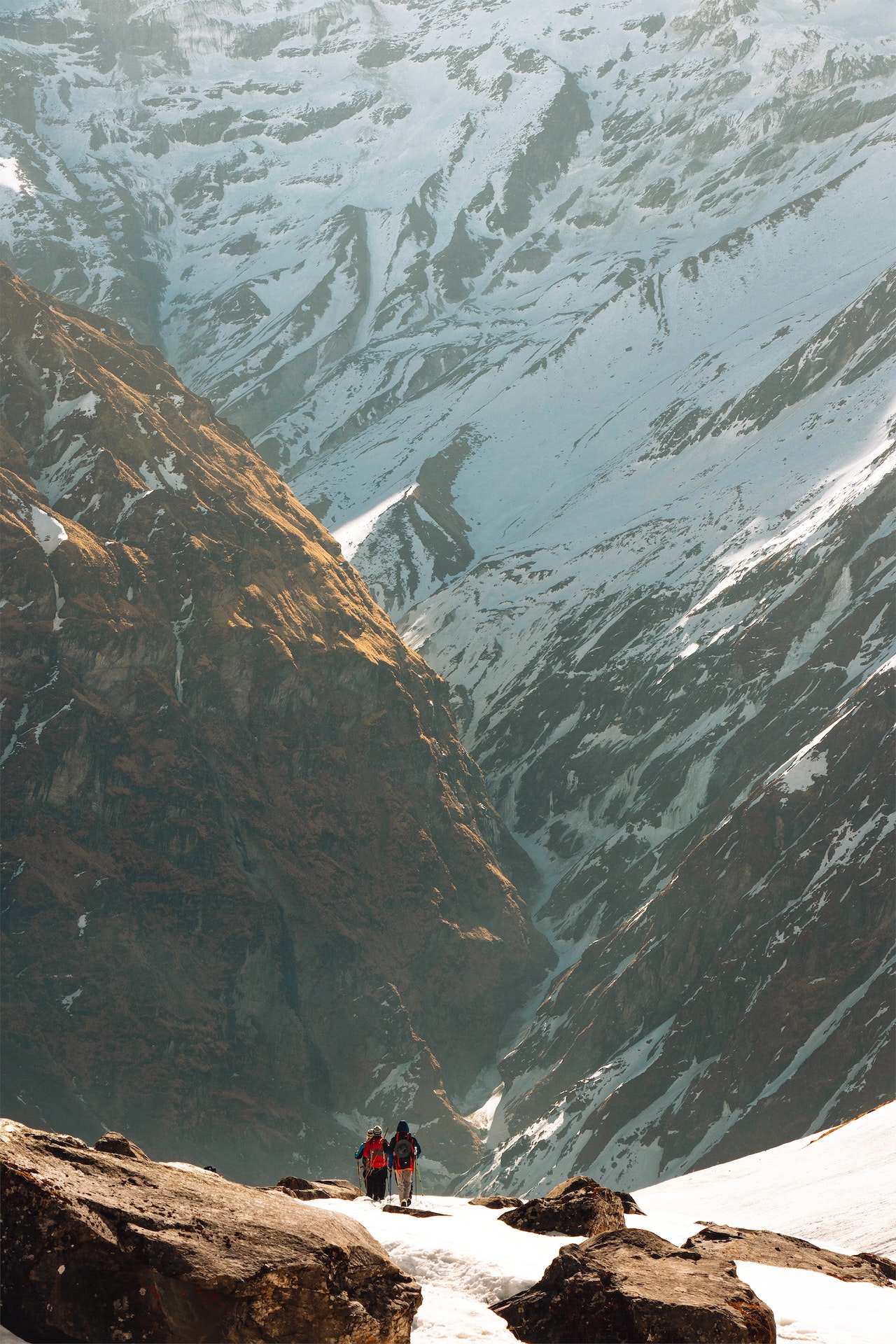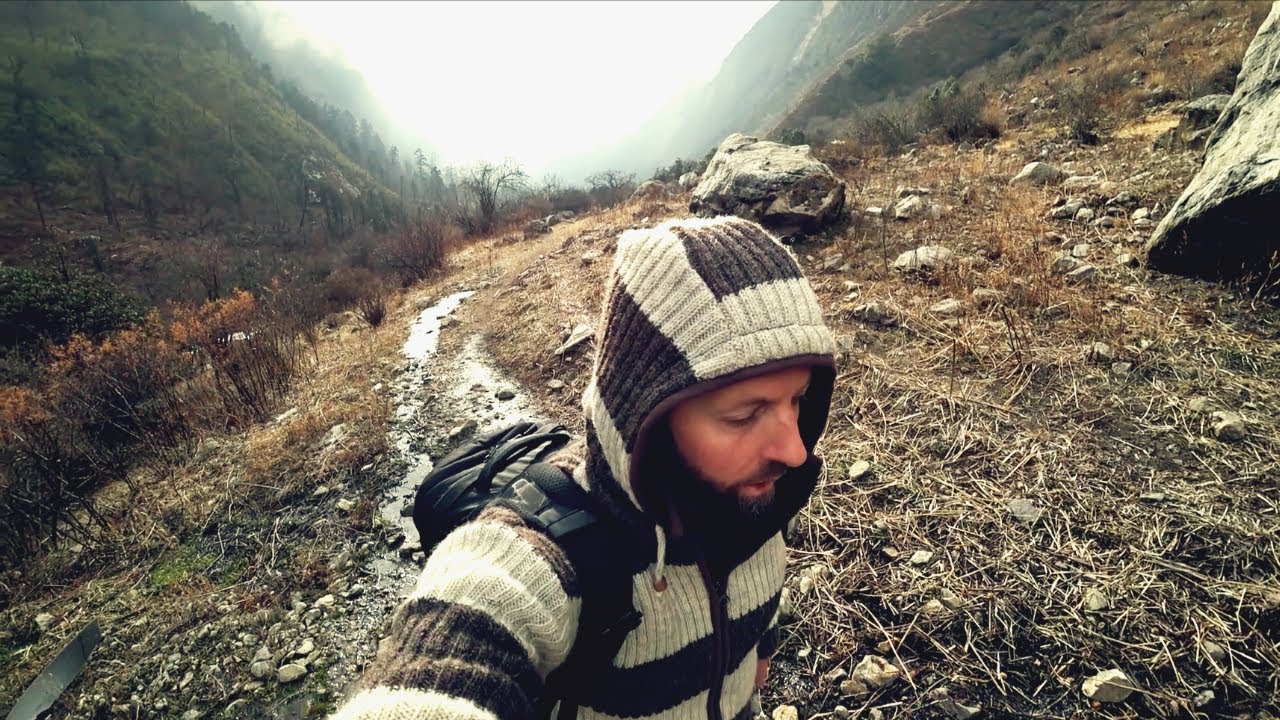Mountain Trekking In The Himalayas - An Adventure Of A Lifetime
Mountain trekking in the Himalayas is a thrilling adventure that offers breathtaking views of the world's highest mountain ranges. The Himalayas, located in South Asia, stretch over 1,500 miles across six countries, including Nepal, India, Bhutan, Pakistan, China, and Afghanistan.
Author:James PierceReviewer:Iram MartinsMay 15, 202311 Shares758 Views

Mountain trekking in the Himalayasis a thrilling adventure that offers breathtaking views of the world's highest mountain ranges.
The Himalayas, located in South Asia, stretch over 1,500 miles across six countries, including Nepal, India, Bhutan, Pakistan, China, and Afghanistan.
With towering peaks and challenging trails, the Himalayas attract thousands of trekkers each year seeking to explore the region's natural beauty and unique culture.
In this article, we will explore the wonders of mountain trekking in the Himalayas and provide you with useful information to plan your own adventure.
Why Mountain Trekking In The Himalayas Is So Popular?
Apart from the stunning natural beauty, the Himalayas offer a unique cultural experience as well. The region is home to various ethnic groups and their traditional way of life, and trekking in the Himalayas allows trekkers to witness and immerse themselves in this diverse culture.
The people in the Himalayas have a unique way of life that is intricately tied to the rugged terrain they inhabit. They have adapted to the extreme conditions of the mountains, and their lifestyle, customs, and beliefs are fascinating to observe.
Additionally, the Himalayas offer a range of trekking options that cater to trekkers of different skill levels and preferences. From easy walks in the foothills to challenging high-altitude treks, there is something for everyone in the Himalayas.
The region is also home to some of the highest peaks in the world, including Mount Everest, which is a major draw for many trekkers who want to challenge themselves and test their limits.
Choosing Your Trek
The Himalayas offer a variety of trekking options, from short and easy hikes to longer and more challenging expeditions. It's important to choose a trek that matches your fitness level, experience, and interests. Here are a few factors to consider when choosing your trek:
- Difficulty Level- The Himalayas offer treks of varying difficulty levels. Make sure to choose a trek that matches your fitness level and experience.
- Duration - Himalayan treks can range from a few days to several weeks. Make sure to choose a trek that matches the duration you have available.
- Altitude- Some treks in the Himalayas reach high altitudes, which can cause altitude sickness. If you are not accustomed to high altitudes, consider choosing a trek that stays at lower elevations.
- Scenery- The Himalayas offer a variety of breathtaking scenery, including mountain peaks, glaciers, lakes, and forests. Choose a trek that offers the scenery you are most interested in.
- Culture- The Himalayas are home to a variety of cultures, including Tibetan, Nepalese, and Bhutanese. Choose a trek that offers the opportunity to experience the culture you are most interested in.
By considering these factors, you can choose a trek that matches your interests and abilities, ensuring a safe and enjoyable experience.

13 Hours Hiking Up Himalaya Alone🇳🇵
Preparing For Your Trek
Preparing for a mountain trek in the Himalayas requires careful planning and preparation. Here are some tips to help you get ready for your adventure:
Get In Shape
Trekking in the Himalayas requires a good level of fitness. Make sure you start exercising and training well in advance, focusing on cardio and strength training to build endurance and stamina.
Acclimatize
The high altitude of the Himalayas can cause altitude sickness, which can be dangerous. It's important to acclimatize by spending a few days at higher altitudes before continuing your trek.
Pack Wisely
The weather in the Himalayas can be unpredictable, so make sure you pack appropriate clothing and gear for all conditions. Bring comfortable and sturdy hiking boots, a warm jacket, a raincoat, a hat, gloves, and sunscreen.
Stay Hydrated
Staying hydrated is important at high altitudes, where dehydration can lead to altitude sickness. Make sure you drink plenty of water and carry a refillable water bottle.
Get Travel Insurance
Trekking in the Himalayas can be risky, so it's important to get comprehensive travel insurance that covers medical emergencies, trip cancellation, and evacuation.
By following these tips, you'll be better prepared for your trek in the Himalayas and have a safer and more enjoyable experience.
Accommodations And Food
Accommodations and food are important considerations when planning a trek in the Himalayas. While some trekkers prefer to camp, there are also many teahouses and lodges along popular routes where trekkers can stay overnight. These accommodations are usually basic, but clean and comfortable.
As for food, most teahouses and lodges offer a wide range of options, including traditional Nepali and Tibetan dishes as well as international cuisine.
Trekkers can also bring their own food and snacks if they have specific dietary requirements or preferences.
It's important to stay well-hydrated and to avoid drinking untreated water, so bringing water purification tablets or a water filter is a good idea.
Safety And Health Considerations
Trekking in the Himalayas can be an exhilarating and life-changing experience, but it's important to take safety and health considerations seriously to ensure a safe and enjoyable trip. Here are some important factors to consider:
Altitude Sickness
The higher you climb, the thinner the air becomes, and altitude sickness can set in. Symptoms of altitude sickness can range from mild to life-threatening, so it's important to take your time acclimatizing and to be aware of the symptoms. Stay hydrated, eat well, and take it easy as you climb higher.
Physical Fitness
Trekking in the Himalayas requires a high level of physical fitness, so make sure you're prepared by doing regular exercise in the months leading up to your trip. It's also important to listen to your body and take breaks when needed.
Weather
The weather in the Himalayas can be unpredictable, so make sure you're prepared for all conditions. Bring appropriate clothing and gear for both warm and cold weather, and be aware of the signs of hypothermia and frostbite.
Terrain
The terrain in the Himalayas can be rugged and steep, so make sure you have appropriate footwear and trekking poles to help you navigate the trails. Be aware of potential hazards such as loose rocks and steep drop-offs.
Water And Food Safety
It's important to stay hydrated and well-fed on your trek, but make sure you're consuming safe food and water. Stick to bottled or filtered water, and avoid raw or undercooked foods.
By taking these safety and health considerations seriously, you can help ensure a safe and enjoyable trekking experience in the Himalayas.
Cultural And Environmental Awareness
When trekking in the Himalayas, it is important to be culturally and environmentally aware. The region is home to a rich and diverse cultural heritage, and it is important to respect local customs and traditions.
Many areas in the Himalayas are also ecologically fragile, so it is important to minimize your impact on the environment as much as possible.
When trekking through local villages, it is important to dress modestly and be respectful of local customs. Be sure to ask for permission before taking photographs of people or their property, and do not disturb any religious or cultural sites you may encounter along the way.
In terms of the environment, be sure to follow the principles of "Leave No Trace" and pack out all of your trash. Do not use firewood from the forests, and be mindful of conserving water and energy throughout your trek.
Additionally, be sure to purchase and carry a reusable water bottle to minimize your use of plastic bottles.
By being culturally and environmentally aware, you can help to ensure that the Himalayas remain a beautiful and sustainable destination for years to come.
People Also Ask
What Are The Best Trekking Routes In The Himalayas?
There are many trekking routes in the Himalayas, each offering a unique experience. Some of the most popular ones include the Everest Base Camp trek, Annapurna Circuit trek, Langtang Valley trek, and the Manaslu Circuit trek.
What Is The Best Time Of Year For Trekking In The Himalayas?
The best time to go trekking in the Himalayas is during the spring and autumn months, which are March to May and September to November, respectively. These months offer the best weather conditions, with clear skies and mild temperatures.
What Are The Permits Required For Trekking In The Himalayas?
There are several permits required for trekking in the Himalayas, including a TIMS card and a trekking permit for the specific area you plan to trek in.
These permits can be obtained through the government tourism office in Nepal or through a trekking agency.
What Are The Physical Requirements For Trekking In The Himalayas?
Trekking in the Himalayas can be physically demanding, and it's important to be in good physical condition before embarking on a trek.
It's recommended to engage in regular physical exercise for at least a few months prior to the trek, and to acclimate to the altitude by ascending gradually.
What Are The Safety Precautions To Take While Trekking In The Himalayas?
Trekking in the Himalayas can be dangerous, and it's important to take proper safety precautions. This includes trekking with a licensed and experienced guide, bringing adequate food and water, wearing appropriate clothing and gear, and being aware of the signs and symptoms of altitude sickness.
Final Thoughts
Mountain trekking in the Himalayas is a dream adventure for many nature lovers and adventure enthusiasts. The Himalayan mountain range offers an unparalleled experience with its majestic peaks, stunning landscapes, and unique culture.
Trekking in the Himalayas is not only a physical challenge but also an opportunity to connect with nature, experience local traditions, and push one's limits.
Whether it's for the stunning views, cultural immersion, or personal growth, mountain trekking in the Himalayas is a truly unforgettable experience.

James Pierce
Author

Iram Martins
Reviewer
Latest Articles
Popular Articles